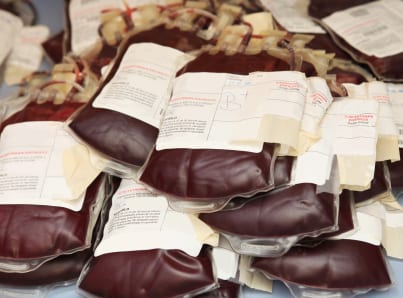
There’s no doubt that blood saves lives. According to the Red Cross, in the United States alone about five million people need a total of 14 million pints of blood each year. That’s 38,000 pints every day.
But transfusions are not without their dangers. Among them is transfusion-related acute lung injury (TRALI), a rare but potentially life-threatening condition that happens when there is a clash between donor and recipient blood. TRALI is one of the major causes of transfusion-association deaths in the developed world.
New research, recently published in the journal Nature Medicine, suggests that many cases of TRALI are due to a difference at just one genetic variation between donor and recipient. This finding could someday enable screening before a transfusion is done, allowing doctors to reduce the risk of TRALI.
One reason TRALI happens is that a donor’s blood contains antibodies that recognize something in the recipient’s blood as an enemy. These donor antibodies mount an attack that sets off a chain reaction of immune responses in the recipient’s body, leading to lung injury. Several triggers for this type of TRALI have been identified. One of these, the HNA-3 antigen, has repeatedly been associated with severe and fatal TRALI reactions.
HNA-3 comes in two versions: HNA-3a and HNA-3b. A person whose body expresses only the HNA-3a version can make antibodies against the HNA-3b version if he or she is exposed to it somehow. Likewise, a person whose body expresses only the HNA-3b version of the protein can end up with antibodies against the HNA-3a version. Someone who expresses both HNA-3a and HNA-3b, as a result of inheriting a different version from each parent, won’t make antibodies against either version. For reasons that aren’t really understood, only antibodies against the HNA-3a version are relevant when it comes to TRALI.
The most common route of exposure to foreign versions of the HNA-3 antigen is childbirth. A woman can be exposed to her child’s blood, and if it contains a different version of HNA-3 than her body is used to, she might produce antibodies. The likelihood that a woman will have antibodies against HNA-3 increases with each birth.
The authors of the new study suggest that their new findings can be used to develop a large-scale screening program that could reduce the risk of TRALI. Blood donors could be genetically screened to find those who are capable of producing antibodies against HNA-3a (i.e., they are AA at ). Alternatively, the new genetic information could help scientists create artificial HNA-3a antigens that could be used in the lab to screen donated blood directly.



